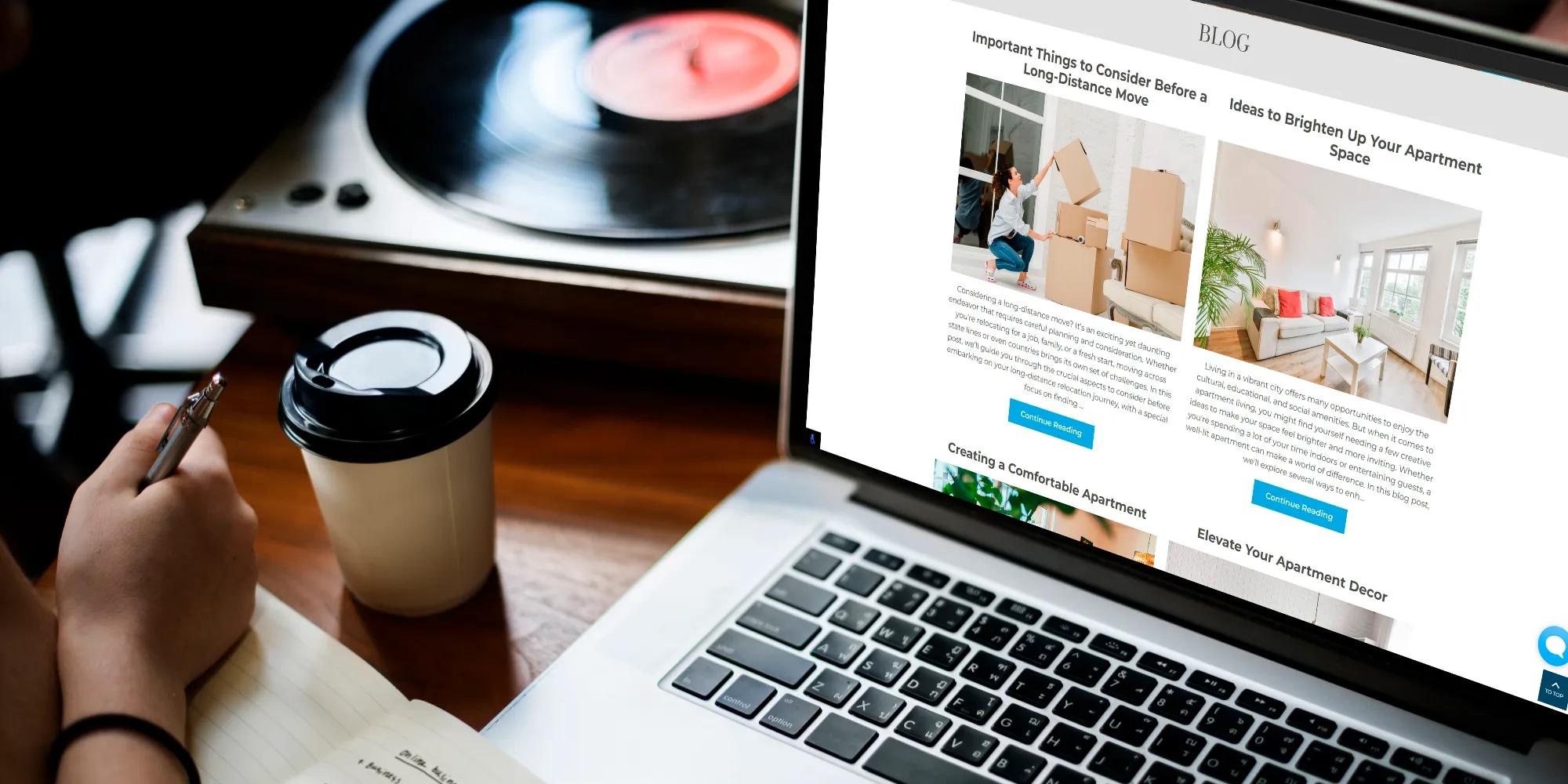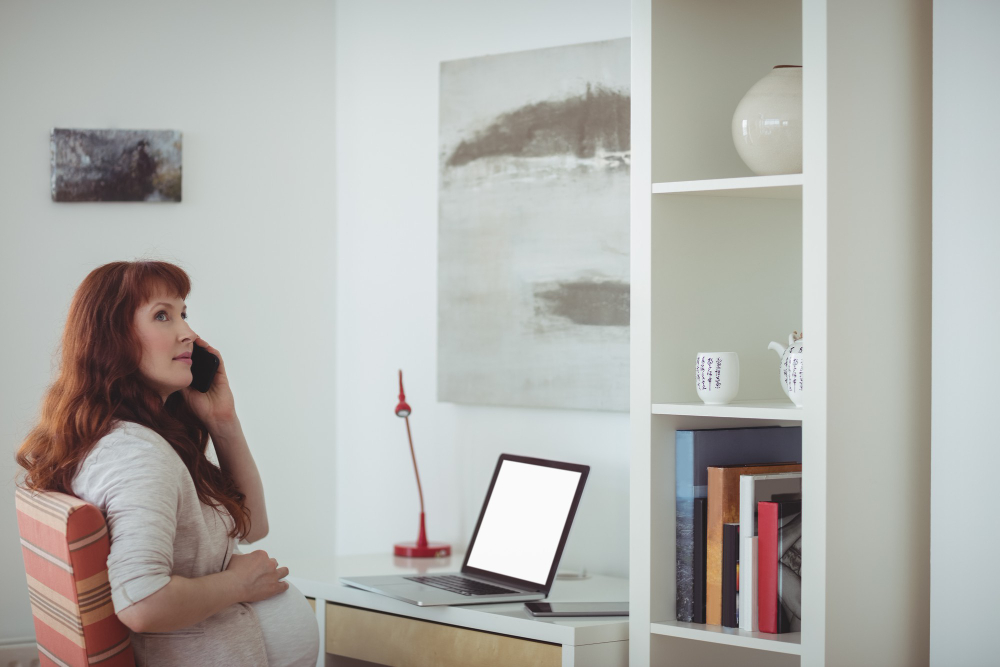

Working from home has become a permanent fixture for many professionals, but creating an effective workspace in a small apartment can feel challenging. With thoughtful planning and creative solutions, you can transform even the tiniest corner of your Cayce, SC apartment into a productive home office that supports your career goals.
Whether you're a remote worker, freelancer, or entrepreneur, having a dedicated workspace improves focus, productivity, and work-life balance. The key lies in maximizing your available space while maintaining the comfort and functionality of your home.
Before diving into design ideas, take inventory of your current living situation. Walk through your apartment and identify potential office locations. Consider these often-overlooked areas:
Unused corners often provide just enough space for a small desk and chair. Corner spaces work particularly well because they naturally create boundaries between work and living areas.
Closets can be transformed into cozy office nooks. Remove the doors and add a small desk, shelving, and proper lighting to create a "cloffice" (closet office).
Bedroom alcoves or wide hallways might accommodate a narrow desk setup without disrupting foot traffic or the room's primary function.
Living room walls can support a floating desk or wall-mounted workspace that folds away when not in use.
Take measurements of each potential space and consider factors like natural light, electrical outlets, and noise levels throughout the day.
Smart furniture choices can make or break a small office setup. Look for pieces that serve multiple purposes:
A dining table can function as both a workspace and eating area. Choose one with clean lines and adequate surface area for your laptop and essential supplies.
Console tables work well against walls and provide surface space plus storage underneath for office supplies or a small filing system.
Floating desks mount directly to the wall, saving floor space while providing a clean, modern look. Many models include built-in storage compartments.
Ottoman storage cubes serve as seating, footrests, and hidden storage for office supplies. They're perfect for small spaces because they tuck away easily.
Bookshelf room dividers create privacy for your workspace while providing storage for books, supplies, and decorative items.
Under-desk storage drawers or rolling carts keep essentials within reach without cluttering your workspace.
When floor space is limited, think vertically. Wall-mounted solutions keep your work area organized without sacrificing precious square footage.
Install floating shelves above your desk for books, plants, and decorative storage boxes. Keep frequently used items on lower shelves and less-used items higher up.
Pegboards offer flexible storage that adapts to your changing needs. Add hooks, small shelves, and containers to hold everything from headphones to office supplies.
Wall-mounted file holders keep important documents organized and easily accessible without taking up desk space.
Choose bookcases and storage units that extend toward the ceiling rather than spreading outward. This approach provides maximum storage while maintaining an open feel in your apartment.
Ladder desks lean against the wall and provide workspace plus shelving in a compact footprint perfect for small apartments.
Creating clear boundaries between work and personal space is crucial for maintaining productivity and mental well-being.
Room dividers don't have to be permanent or bulky. Folding screens, curtains, or even tall plants can create visual separation between your office and living areas.
Area rugs define your workspace and add warmth to hard flooring. Choose a size that accommodates your chair's movement while staying within your designated work zone.
Different lighting for your work area helps signal the transition between work and personal time. A dedicated desk lamp creates focused task lighting separate from your apartment's ambient lighting.
Designate specific storage areas for work materials to prevent them from spreading throughout your apartment. Use labeled containers, drawer organizers, and cable management systems to maintain order.
Create a daily setup and breakdown routine if your workspace doubles as another area. This ritual helps maintain boundaries and keeps your apartment organized.
Proper lighting significantly impacts productivity and eye health, especially important when working in a small space.
Position your desk near a window when possible, but avoid screen glare by sitting perpendicular to the window rather than directly facing it.
Use light-colored curtains or blinds that filter harsh sunlight while maintaining brightness throughout the day.
Mirrors strategically placed opposite windows can reflect natural light deeper into your workspace.
Layer your lighting with ambient, task, and accent lighting. A combination of overhead lighting, desk lamps, and perhaps a floor lamp creates a well-lit, comfortable environment.
LED lights are energy-efficient and produce less heat than traditional bulbs, important considerations in a small apartment where every bit of comfort matters.
Adjustable lighting allows you to modify brightness throughout the day, supporting your natural circadian rhythms and reducing eye strain.
A cluttered workspace filled with tangled cables can make even the most organized office feel chaotic.
Use cord organizers, cable trays, or adhesive cable clips to route wires along desk edges and walls. This creates a cleaner appearance and prevents tripping hazards.
Power strips with USB ports reduce the number of adapters needed while keeping charging capabilities within easy reach.
Position your computer monitor at eye level to reduce neck strain. Monitor arms or laptop stands can help achieve proper ergonomics while saving desk space.
Wireless peripherals like keyboards and mice reduce cable clutter and provide flexibility in your workspace arrangement.
Your home office should inspire productivity while reflecting your personality, but avoid overwhelming a small space with too many decorative elements.
Choose one or two pieces of art or motivational prints that energize you without overwhelming the space.
A small plant adds life to your workspace and can improve air quality. Choose low-maintenance options like succulents or snake plants if you're new to plant care.
Personal photos in simple frames add warmth without creating visual clutter.
Light colors make small spaces feel larger and more open. Consider whites, light grays, or soft pastels for your primary color scheme.
Add energy with small pops of color through accessories like a colorful desk lamp, vibrant storage boxes, or a bright mouse pad.
Setting up a productive home office in a small apartment requires creativity, but the results are worth the effort. Start with one area and gradually refine your setup based on your daily work habits and needs.
Remember that your workspace should evolve with your career and lifestyle changes. What works today might need adjustment as your work demands shift or your living situation changes.
If you're looking for apartments in Cayce, SC, contact Otarre Pointe Apartments today to schedule a personal tour. Find the perfect space to create your ideal home office setup.